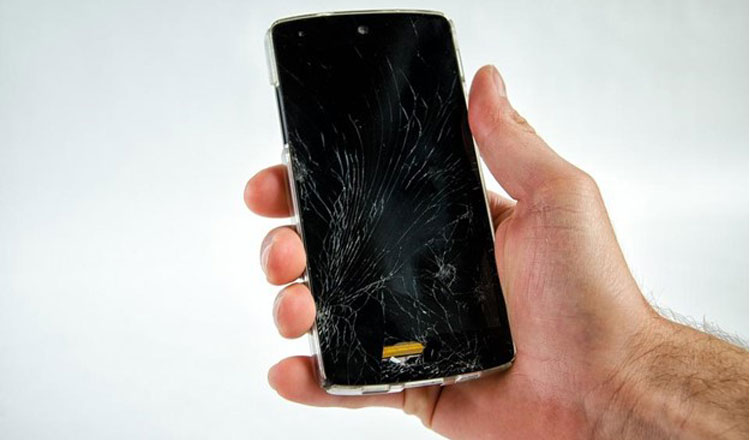From year to year, smartphones get more expensive, as well as repair fees. Sometimes they can reach up to 60-70% of the smartphone’s price. That’s why a lot of users start to search for protection options even before they buy a new device.
We asked Howly tech experts how to fix a broken screen and protect it from possible damage. They told us that each case of a broken screen is unique. But, most often, this issue can be quickly fixed at home if you have repair skills and a troubleshooting guide. However, it will be wiser just to protect the display with budget-friendly accessories. That’s why they want to share with you the best ways to protect any phone screen.
Why Do You Need a Screen Protector?
With every generation, devices become more scratch-resistant. Most new phones (except ultra-budget options) won’t get a scratch when you rub them with nails or keys. A lot of middle-budget devices have Gorilla Glass screens. iPhone 12 and later have a Ceramic Shield screen that protects the display even better.
But all that displays are not 100% uncatchable. They will still get scratches here and there while you use the phone. New tough screens are slowing down this process, but you will see first scratches and cracks after a few months of daily usage. Screen protectors can take a major burden on themselves. If you can change it once in a few months, your screen will always be in perfect condition.
4 Types of Screen Protectors
You have 4 options to protect your screen. We sort it from the cheaper to the most expensive one, so you can find what fits your budget.
1. PET (Polyethylene Terephthalate) protector
PET is one of the most popular types of plastic in daily life. It’s commonly used in the food and cosmetic industries for creating non-toxic containers. You can find recycled PET even in the fashion industry. And one of the main fields of application of PET plastic is screen protectors and bumpers for phones and tablets.
They provide the least amount of impact and scratch protection, but they are ridiculously cheap. You can buy a pack of 5 PET “glasses” for $10 and change them once in 1-3 months.
2. TPU (Thermoplastic Polyreuthane) protector
It’s a more advanced and scratch-resistant type of plastic. It’s a flexible material, so you can easily install it and squeeze all bubbles. TPU protectors have a rubbery texture, so the phone won’t slip from your hands.
It’s a bit more expensive than PET, but it lasts much longer. You can find a fine TPU protector for $4-7 and change it once a quarter. It will secure the screen from fingerprints, scratches, and light cracks.
3. Tempered glass
It is the most damage-resisting choice to save the display from cracks and scratches. It costs more than the above options, but it will payout with the longevity of tempered glass protection. You can change it once in 8-10 months.
You can buy a pack of 3 for $17-25. It could be difficult to glue it to the screen if you don’t have the skills. That’s why we recommend you buy a pack, so you can train on how to install it properly.
4. Nano Liquid
It’s the most modern type of screen protection. Manufacturers try to prove that it will provide you with top-tier protection from everything. But in reality, it only can save your phone from tiny scratches. Liquid protections create an ultra-thin layer of protection that can’t even help from the key scratches.
Even more, you can’t just remove it. You will need to heat the device under direct sunlight for 1-2 hours and manually polish it. And there is no guarantee that you don’t scratch an actual display. That’s why many experts recommend it combined with some solid protective solutions.
How Else Can You Protect Your Phone?
If you actively use your phone or tablet, you know that screen protection is not enough. Smartphones are dedicated tech that tends to fall or slide off even in most tidy owners. So it would be better to get some extra protection, like:
- Case with raised bezel and air cushions. It absorbs shock if your phone falls face-down. The tempered glass absorbs the rest of the shock. All you need is to change broken tempered glass to new.
- Pop socket. It’s the tool that attaches to the back of your phone and gives you more grip while you use it. It’s a necessary accessory for large phone and mini-tablet owners. They can hold it with one hand without fear of a device slipping off their hands.
- Holder. If you like to watch videos, add a stable point of support. Phones can easily slip off from the hand-made stand, but pre-made holders will have a good grip on the device. A car holder is an obligatory tool for car owners. Moreover, it’s the only legal way to use a phone for navigation.
Final Thoughts
Though modern smartphones promise you built-in protection from scratches and cracks, the reality is different from their words. Even flagship smartphones still need to use external safety tools. The most effective options are budget-friendly: screen protectors, bumpers, pop sockets, and holders. Combine them, and you will protect your phone from most of the damage.
And remember, those that are more expensive not always be better. In most cases, cheap tempered glass for $5 will perform as well as a $15 alternative. Check reviews and comments to find a protector that fits your expectations.

